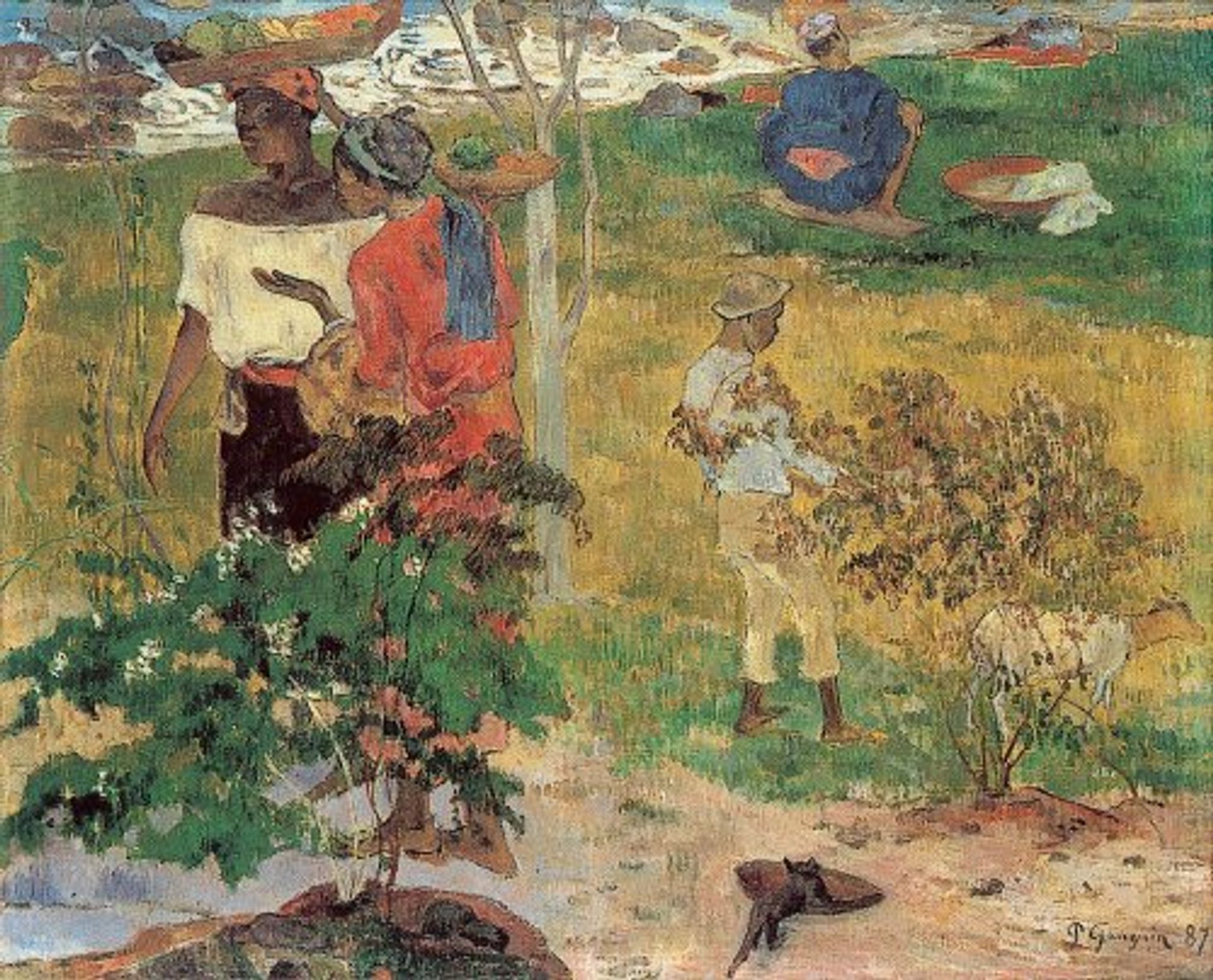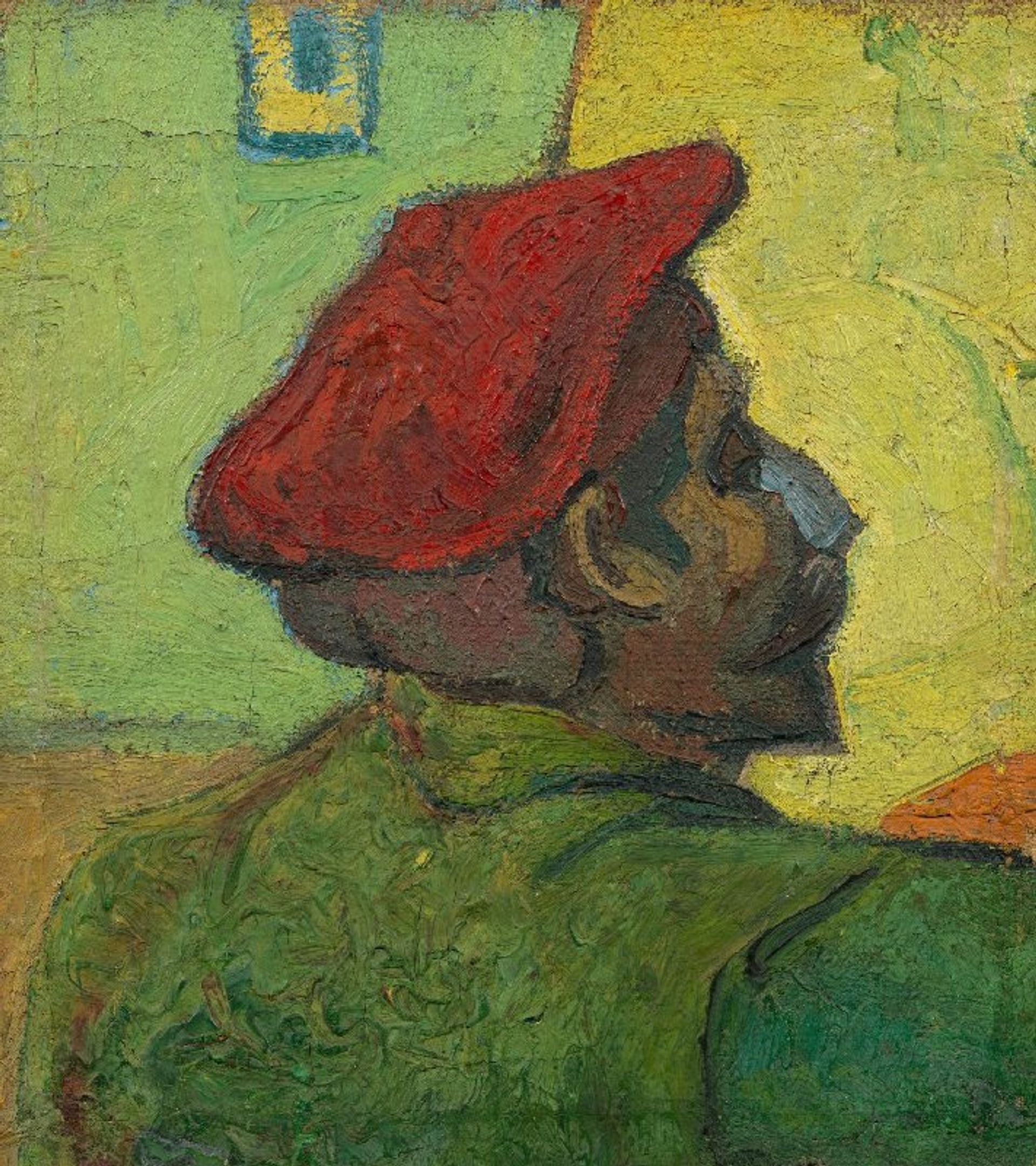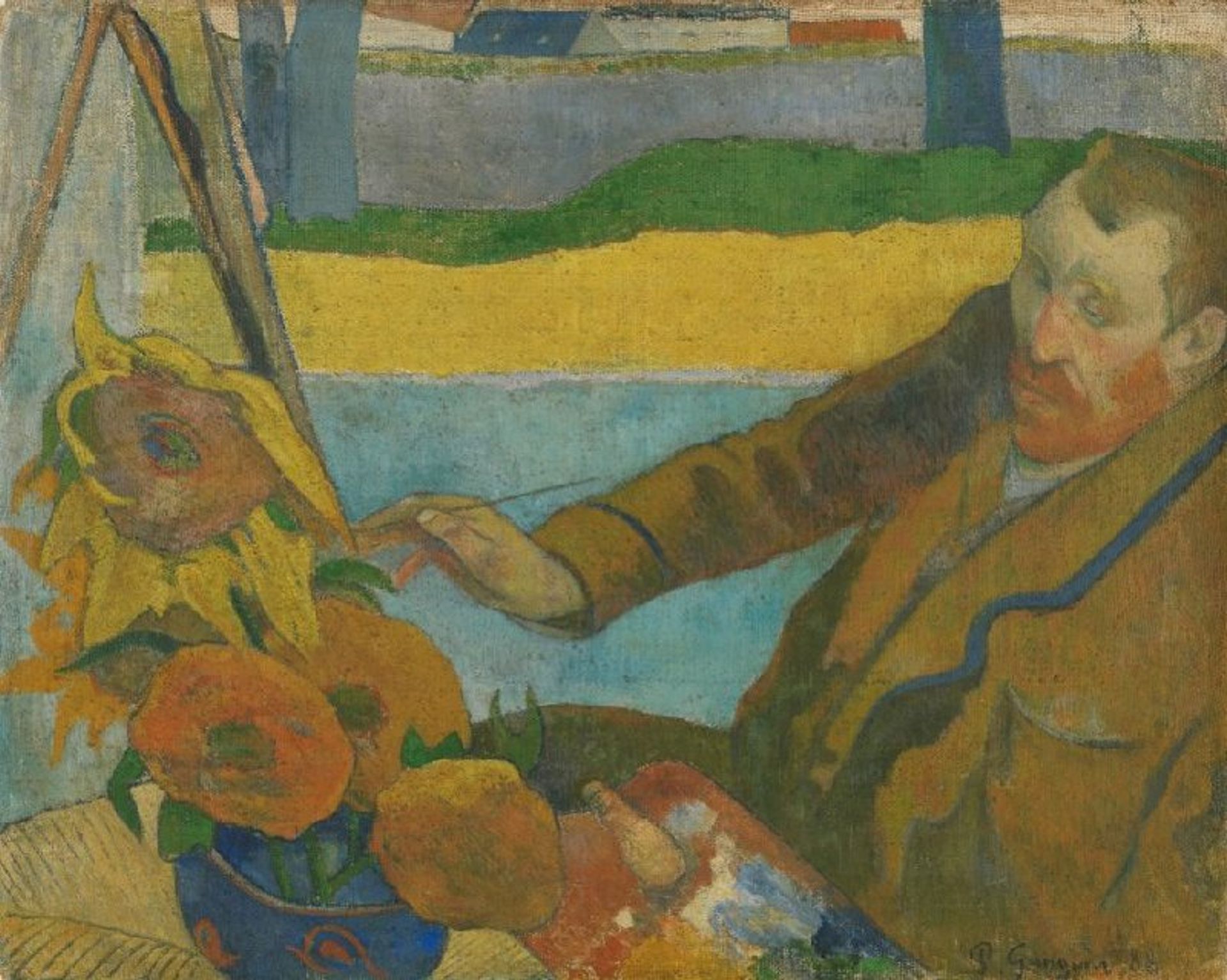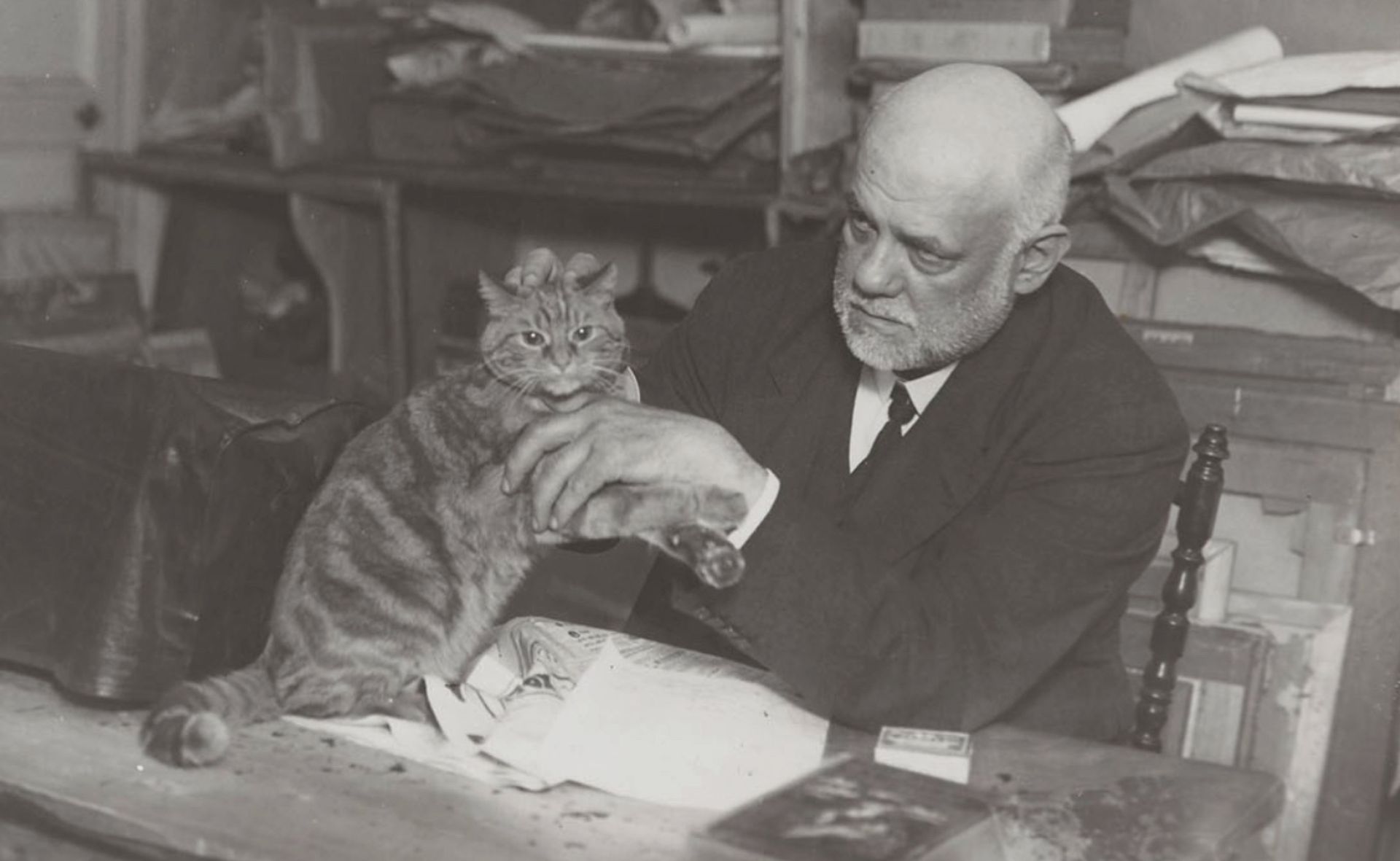Paul Gauguin’s kittenThe work, which has been in a personal assortment for greater than a century, has simply been exhibited on the Van Gogh Museum in Amsterdam. This pleasant work was created whereas the French artist lived with Van Gogh within the Yellow Home in Arles.

Paul Gauguin’s tropical dialog (July to October 1887)
Picture supply: Wikimedia Commons Non-public Assortment
Artistically, the cat (or kitten) faithfully follows Gauguin on his far-flung journeys.It first appeared on the West Indies island of Martinique, the place the cat is pictured within the foreground tropical dialog. The cat was apparently licking milk and rapidly inserting its entrance paws into the massive dish.
A yr later, the creature reappeared in Arles, kitten.As a result of Gauguin didn’t take tropical dialog It’s probably that he had at hand a pencil sketch from Martinique when he arrived in Arles (such a sketch comes from his West Indies sketchbook, which nonetheless exists in a personal assortment). Or possibly he merely memorized the animals’ distinctive poses.
Most strikingly, the cat reappeared ten years later in Gauguin’s biggest masterpiece, The place are we from? What are we? the place are we going? (Particulars beneath), accomplished in Tahiti in 1897-98. It’s an bold work, practically 4 meters extensive.
A pair of cats seem prominently within the central foreground: one faces the viewer, the opposite assumes a Martinique pose along with his entrance paws on a plate. This time, the black cat turned white, though it had black spots on its butt.

Paul Gauguin’s The place are we from? What are we? the place are we going? (element) (1897-98)
Picture supply: Museum of High-quality Arts, Boston (Tompkins Assortment)
Wanting on the portray simply revealed kitten, which can seem like only a charming depiction of a feline, is the truth is the one remaining a part of what could have been a a lot bigger unique nonetheless life. Gauguin was in all probability dissatisfied with the complete composition, and in some unspecified time in the future he minimize out and discarded three-quarters of the canvas, retaining solely the left quarter (72 x 25 cm).
Clues concerning the unique portray come from a remark Vincent wrote to his brother Theo on November 21, 1888. Gauguin was engaged on “a big nonetheless life with an orange pumpkin, some apples and white linen, with a yellow background and foreground”.
Apparently, Van Gogh himself had earlier painted a nonetheless life with a barely uncommon mixture of pumpkins and apples (September 1885, now within the Küller-Müller Museum, Otterlo), so he could have Really helpful this composition to his associates.

Van Gogh’s portrait of paul gauguin (November-December 1888)
Picture supply: Van Gogh Museum, Amsterdam (Vincent Van Gogh Basis)
Nonetheless, there’s a obscure visible illustration of a part of Gauguin’s Misplaced Nonetheless Life within the background of Van Gogh’s portray. portrait of paul gauguin. It is usually a captivating portray as a result of because the Thirties it was largely thought of a faux and has not been exhibited within the Van Gogh Museum (the portray is documented within the museum’s 1987 catalog for “Nameless”). I believe it’s in all probability genuine, though it isn’t profitable as a murals.
I checked a number of years in the past portrait of paul gauguin Within the conservation studio of the Van Gogh Museum, an article was printed shortly after Apollo (July 1996), arguing for its authenticity. 5 years later it was accepted by the museum. For me, the signal of its acceptance was when museums began promoting postcards of the portrait.
portrait of paul gauguin Depicts an artist carrying a beret, engaged on a yellow canvas at an easel at a slight angle. In entrance of him was the obscure define of a spherical object, and beneath it was a small orange space, presumably a pumpkin. The portrait thus depicts Gauguin portray his misplaced nonetheless life.In a way it displays Gauguin’s portrait of his good friend sunflower (August 1888) on his easel, in all probability completed on the similar time.

Paul Gauguin’s Vincent van Gogh painted sunflowers (December 1888)
Picture supply: Van Gogh Museum, Amsterdam (Vincent Van Gogh Basis)
The background of each is yellow kitten and nonetheless lifes on easels. portrait of paul gauguin Most certainly represents a nod to Van Gogh and his favourite colour.Simply three months in the past, Van Gogh had accomplished his portray sunflower With its daring yellow background, it is a portray that Gauguin significantly admired.
analysis reveals kitten and portrait of paul gauguin Each had been painted on jute somewhat than a conventional artist’s canvas. Though additional investigation is presently underway on the Van Gogh Museum, it’s probably that the 2 work had been created from the identical 20-meter-long roll of jute bought by Gauguin shortly after arriving in Arles.
What occurred kitten? It was bought by Gauguin’s seller in Paris, the avant-garde Ambroise Vollard.He was recognized for his love of cats, and one wonders if Gauguin may need merely included these two creatures The place are we from? What are we? the place are we going? Partly to please his sellers.

{Photograph} of Ambroise Vollard on the Paris Gallery (circa 1934) (element)
Picture credit score: Thérèse Bonney © Regents of the College of California, Bancroft Library, Berkeley (Inventive Commons)
In 1906, three years after Gauguin’s demise, kitten Acquired by French collector and artist Gustave Fayet. A 1913 photograph reveals it hanging in his examine.

Photograph of Gustave Fayet and his daughter Yseult in his examine at Château d’Igny, kitten Hanging above the desk (1913)
Picture supply: © Gustave Fayet Artwork Museum in Fontfroide (MAGFF) – www.gustavefayet.fr
Fayet died in 1925. Though the present proprietor has not been named, it’s alleged to be a descendant of the collector. Most unusually, certainly one of Gauguin’s work has remained in the identical household since its unique buy.
A have a look at Gauguin’s playful cat illustrates the doable affect of Japanese prints in his thoughts, as these creatures typically seem in such works. Gauguin didn’t copy cats from particular Japanese prints, however he was probably impressed by them.
kitten There’s one other similarity to Japanese prints: sudden cropping. Gauguin merely minimize off the tip of the cat’s tail to chop the canvas. This dramatic cropping was unusual in European artwork of the time, however was frequent in Japanese prints. The truth that Gauguin’s work could be very prominently signed means that he was happy with the deleted scenes.
Now kitten On mortgage to the Van Gogh Museum, the portray shall be topic to additional examine. The hope is to have the ability to study the perimeters of the canvas and use non-invasive methods to look at beneath the obvious nonetheless life floor on the easel inside the portray.
on the similar time kitten The work is exhibited alongside different work produced by the 2 artists throughout the essential ten weeks they spent within the Yellow Room, a interval that was dropped at an abrupt finish when Vincent minimize his personal ear.

